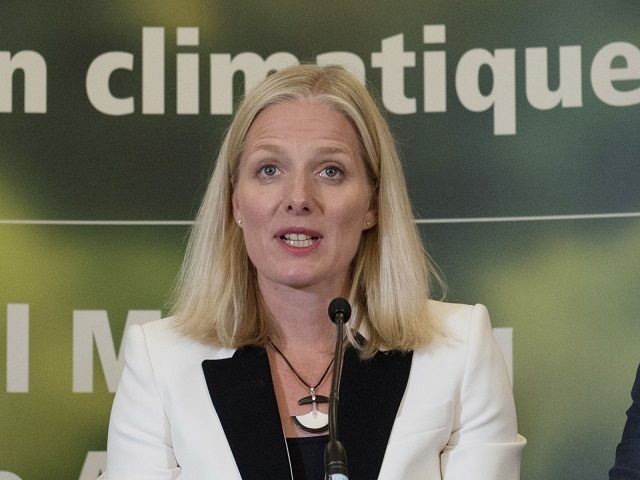The Canadian Minister of Environment and Climate Change has justified the nation’s new carbon tax by suggesting that carbon dioxide is a pollutant.
In a tweet Tuesday, Catherine McKenna, confused the issue of air pollution with emission of greenhouse gases such as CO2. “Canadians know that pollution isn’t free,” the minister wrote. “We see the costs in storms, floods, and wildfires — that’s why we’ve announced we’re putting a price on pollution. It’s good for the environment and it’s good for the economy.”
In May 2018, the World Health Organization (WHO) published a comprehensive report documenting the severe health risks caused by air pollution.
According to the WHO report, “around 7 million people die every year from exposure to fine particles in polluted air that penetrate deep into the lungs and cardiovascular system, causing diseases including stroke, heart disease, lung cancer, chronic obstructive pulmonary diseases and respiratory infections, including pneumonia.”
The report made no mention of climate change and spoke only of the adverse health effects of polluted air, a different phenomenon. All of the potentially fatal pathologies referenced in the report are caused by “exposure to fine particles in polluted air” and not by global warming, much less exposure to carbon dioxide.
In its infographic on the causes of air pollution, the WHO lists six sources of dangerous fine particulate matter, none of which is related to climate change. The six sources of air pollution are industry and energy supply, dust, agricultural practices, transport, waste management, and household energy.
Among the six solutions proposed by WHO for combatting air pollution, not one of them touches on carbon dioxide emissions, for the simple reason that CO2 is not a pollutant and is not harmful to human health.
Unlike pollutants, carbon dioxide is odorless, colorless, and most importantly, non-toxic. Human beings expel carbon dioxide with every breath they take (without polluting), and breathe it in with every lungful of air they inhale — to no ill effect. Carbon dioxide is no more a pollutant than oxygen.
The WHO database collects annual mean concentrations of fine particulate matter. Those that pose “the greatest risks to human health” are sulfate, nitrates, and black carbon, they state.
The WHO report further noted that deaths relating to air pollution occur overwhelmingly in third-world countries where large segments of the population “still do not have access to clean cooking fuels and technologies in their homes.”
Ms. McKenna — affectionately known as “Climate Barbie” — is not alone in erroneously confusing carbon dioxide with air pollution.
Canadian finance minister Bill Morneau has made the same mistake, referring to CO2 emissions as “carbon pollution.” Carbon pollution does indeed exist in certain parts of the world, but it should not be confused with carbon dioxide, which is a normal component of air, and not a foreign pollutant.
Follow Thomas D. Williams on Twitter Follow @tdwilliamsrome

COMMENTS
Please let us know if you're having issues with commenting.